Looking for the definitive mobile
juggernaut? We put three of the latest quad-core Android smartphones to the
test. Which will be crowned king?
For gadget enthusiasts, upgrading is often
about multi-core processing performance, graphics capabilities, display real
estate, and imaging resolution. And no, we’re not referring to the next desktop
computer, we’re talking about your next quad-core smartphone upgrade.
Design & handing
HTC One X
HTC has an enviable record of making phones
that are both fashionable and sleek, and they’ve certainly raised the bar with
the One X, available in a black and grey combination, as well as white.
Constructed out of a polycarbonate unibody, the One X takes a slightly
different design route from HTC’s earlier flagship models such as the HTC
Sensation XL and HTC Sensation XE, which were made from a combination of
aluminum and plastic. At 130g, the One X feels extremely light yet solid in the
hands. Despite the large 4.7-inch display, the One X fits snugly into our
pockets thanks to its slim profile of 8.9mm. You will find the standard
microUSB port on the left side of the One X and the 3.5mm audio output jack on
the top left corner. On the top right corner, the Power button and microSIM
card slot. The volume button is essentially a long strip housed on the right
side of the One X. we like how the physical buttons provide a decent level of
tactile feedback. However, there are no microSD card slots, which means users
can’t extend their memory space beyond what’s available on the phone.
·
Display: 4.7”
·
Operating system: Google Android 4.0
·
Dimensions: 134.86 x 69 x 8.9mm
·
Weight: 130g
·
Price: $898

The
One X has a three-button configuration on the front face, just like the Galaxy
Nexus.
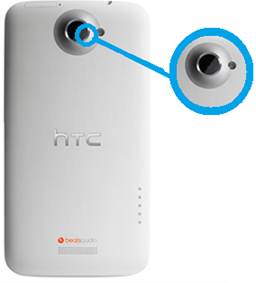
The
protruding 8-megapixel camera module is vulnerable to accidental scratches.

The
One X comes with a non-removable battery.
LG Optimus 4X HD
LG has put in quite a bit of work in the
effort to be at the forefront of smartphone design, but has had trouble finding
a consistent look of its own. That’s not to say that LG doesn’t make
good-looking handsets. In the case of the Optimus 4X HD, available in both
black and white, this statement rings especially true. The device itself
doesn’t look bad, but it isn’t outstanding either, seemingly inspired by the
angular, minimalist form of the Prada Phone by LG 3.0, with the black variant
of the Optimus 4X HD showcasing a similar set of black and silver trimmings.
The phone fits comfortably in our hands, in part due to its rather thin and
lightweight body. Like the Prada Phone by LG 3.0, the device comes sheathed in
a plastic body with a grooved back for better grip. At a quick glance, it isn’t
a stretch to say that it resembles the Galaxy S II, albeit with a bigger
screen. However, hardware buttons like the volume rocker and the power control
are almost too well-camouflaged for our liking. On the flip-side, they present
good tactile feedback when pressed.
·
Display: 4.7”
·
Operating system: Google Android 4.0
·
Dimensions: 132.4 x 68 x 9.19mm
·
Weight: 141g
·
Price: $738
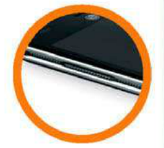
This
is one of the few new smartphones that still use a standard SIM card.
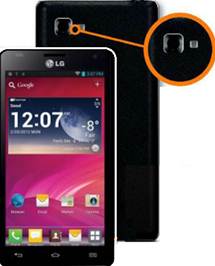
At
the back of the device, you can find an 8-megapixel camera and LED flash.

Unlike
the One X, the Optimus 4X HD isn’t fitted with the usual back, home, and
multitasking touch controls.
Smartphone today are designed with special attention paid
to aesthetics, handing and ease of use.
Samsung Galaxy S III
Instead of the angular form factor that was
showcased on the Samsung Galaxy S I and Galaxy S II, the Galaxy III takes on a
curvaceous shape quite like the Galaxy Nexus. This doesn’t put a dent in tis
usability however – the rounded edges make it easier for handing. At 8.6mm
thin, the device compensates with a lightweight body which makes its 4.8-inch
screen a little easier on the finger too. With the Galaxy S OOO completely
encased in plastic, it lacks the finesse that similarly plastic
polycarbonate-protected One X achieves. Throw in a questionable glossy finish
and the phone screams “tacky”. At least, that should have been the case. In
real life, the Galaxy S III actually doesn’t look as bad as it does in
Samsung’s promotional materials. There’s good reason for the glossiness too,
and Samsung is quick to reassure that their patented Hyperglaze coating will
make the phone look organic. Unfortunately though, the physical buttons on the
device are almost identical in position and appearance. Thankfully, you do get
some tactile feedback, making it easy to unlock the phone’s screen or adjust
the volume, otherwise, we were mostly impressed.
Display
4.8”
Operating system
Google Android 4.0
Dimensions
136 x 70.6 x 8.6mm
Weight
133g
Price
$998 (16GB)
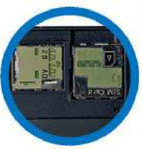
You’ll
find both microSIM and microSD card slots on the Galaxy S III
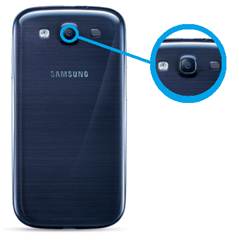
For
imaging, users get an 8-megapixel camera with f2.6 lens and LED flash.

Users
get a lone home button, as well as Menu and Back capacitive-touch buttons.